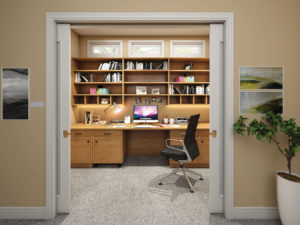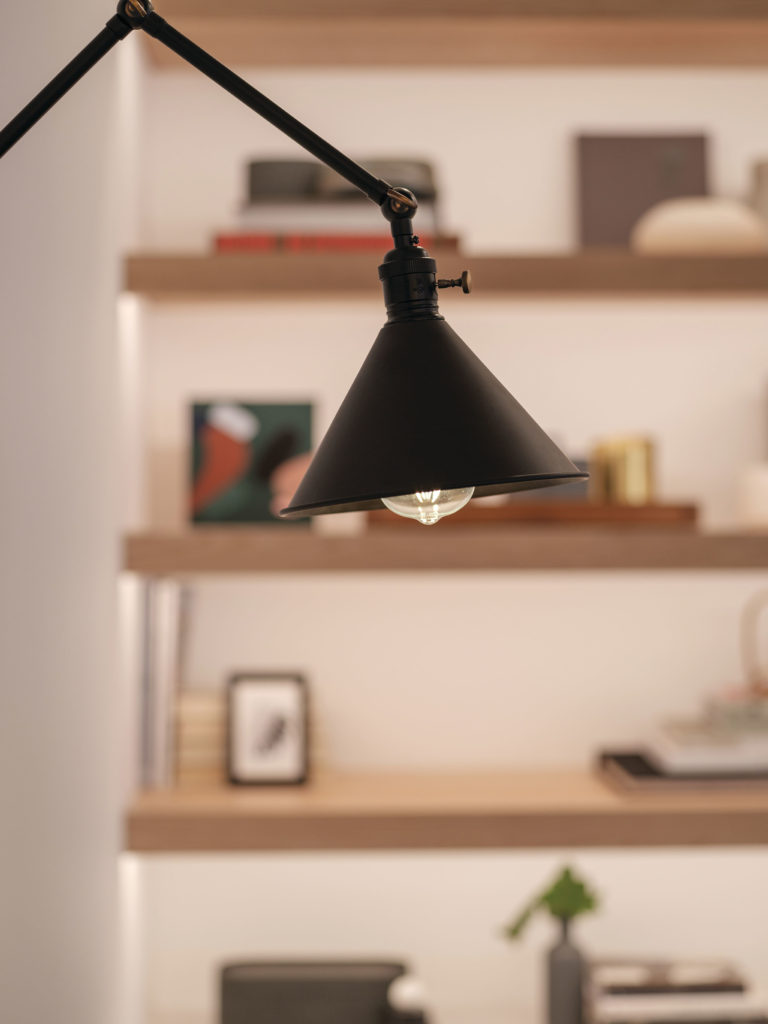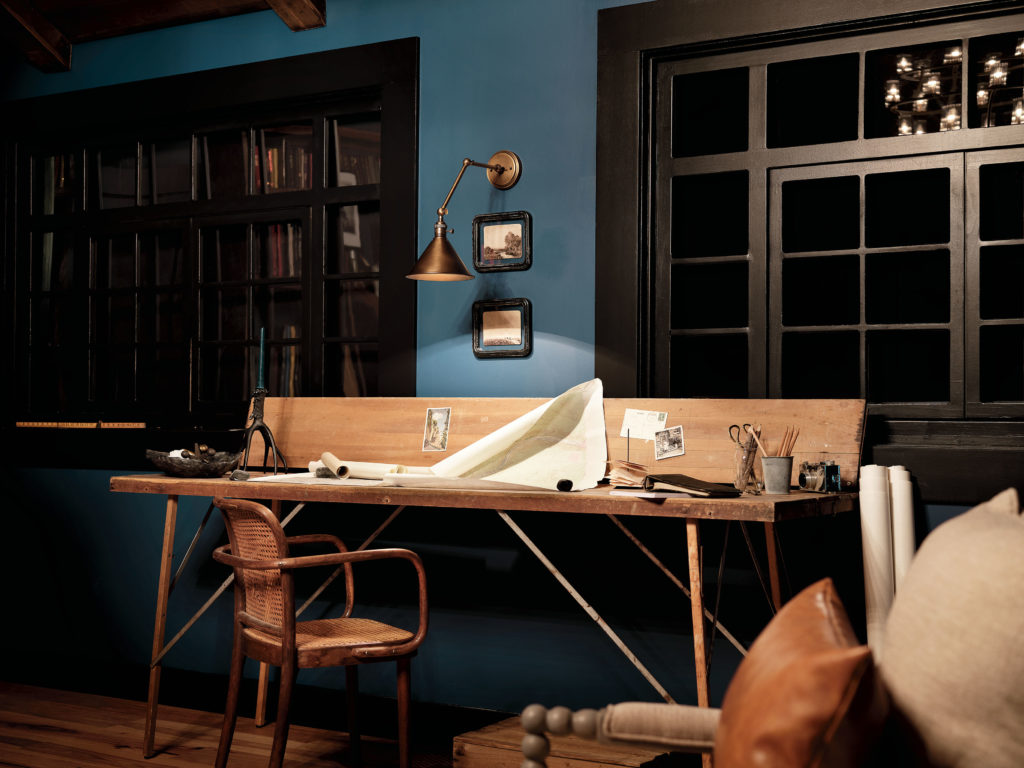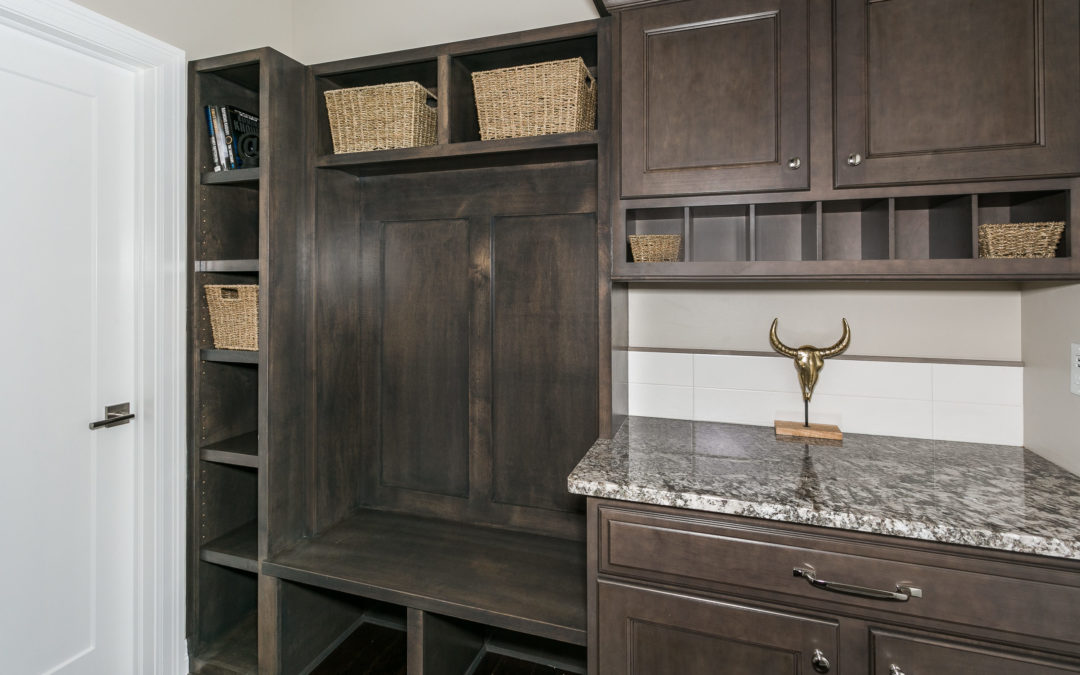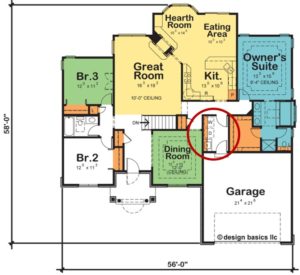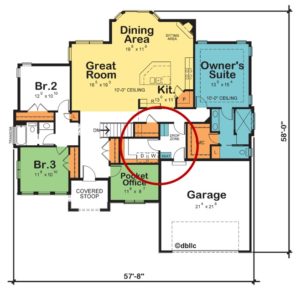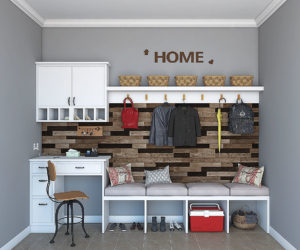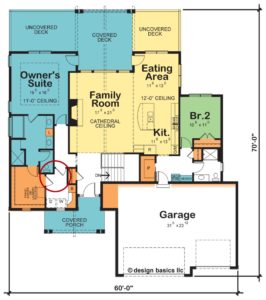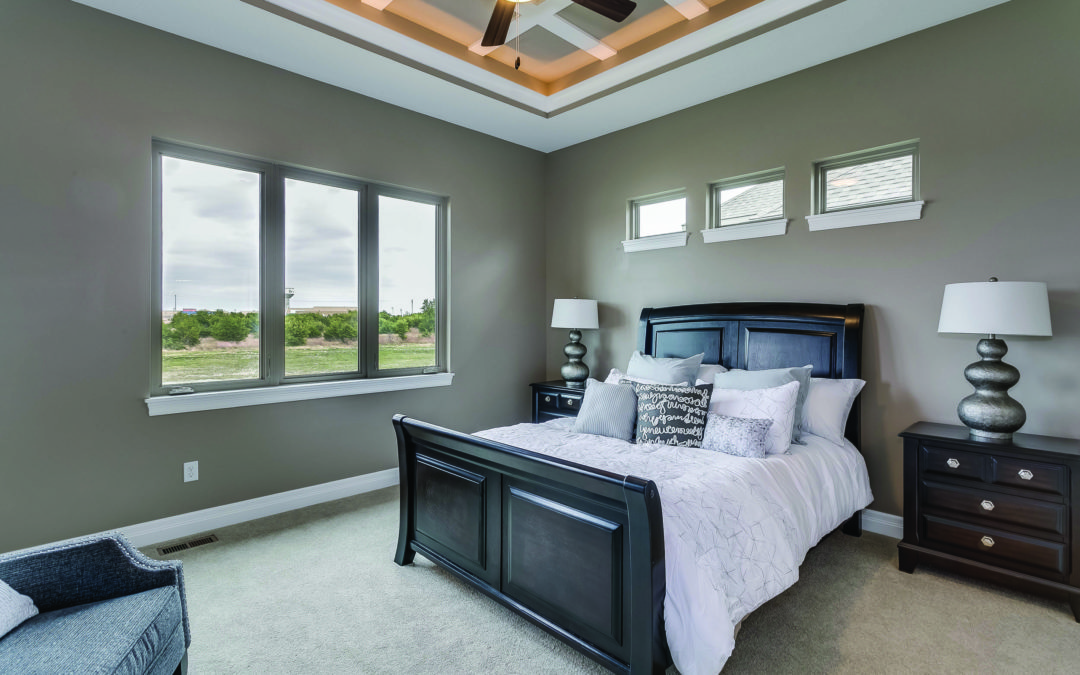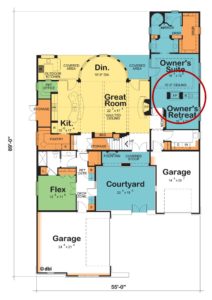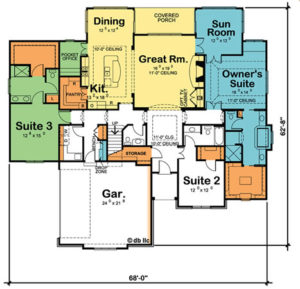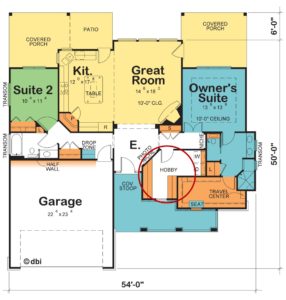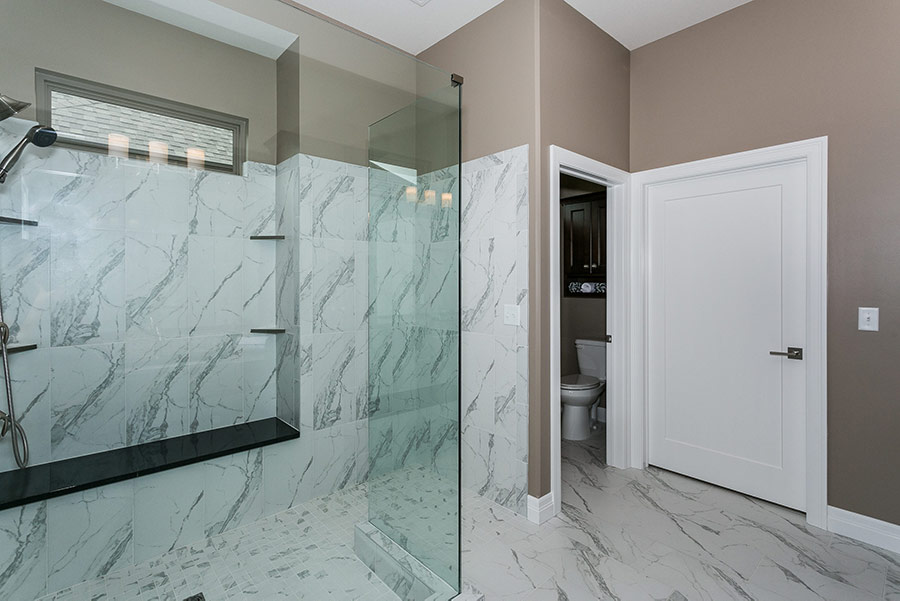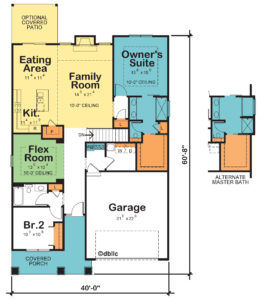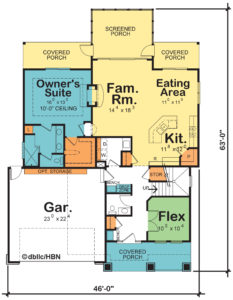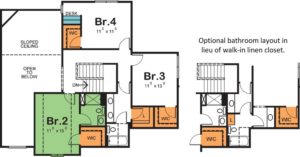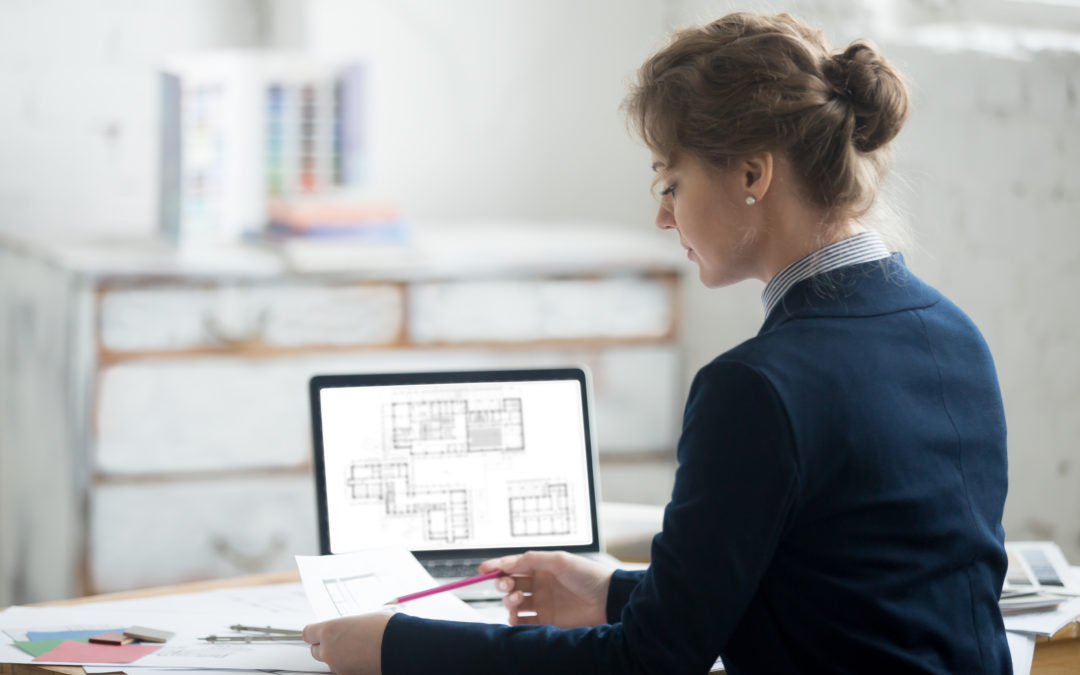
Take the Stress Out of Working from Home
Fifty percent of all businesses in the United States are home-based businesses, according to the U.S. Small Business Administration. Forty-three percent of American employees work remotely (telecommute) at least some of the time. Whether operating a full-time startup, working from home three days a week, or simply bringing work home there wasn’t time to finish at the office, creating the perfect area for working from home can help alleviate some of the stress of that job.
The location of your home office affects stress levels. If you work alone, views and a connection to the outdoors may be important for relaxing, concentration, and even inspiration. We see creatives turning attics into wonderful studios, but if clients or colleagues will be dropping by, you may want a home office with its own exterior entrance, or one that’s located just off the entry foyer. Especially if a visitor would find stairs to be an obstacle, a no-step front entry welcoming everyone regardless of their mobility shows great consideration for your visitors. A third option is creating an entry vestibule, reducing the stress of having your visitors traipsing through your home. And if there will be frequent meetings, do you want them to take place in your home work space?
Privacy vs. Accessibility. Are other people home when you’re working? If so, balancing your privacy and accessibility are paramount. Older kids won’t need your attention like toddlers will. If you moved a parent in with you, realistically, what are the demands on your time as a caregiver?
Bath accommodations are also an aspect of location. It may be a mild inconvenience or even a welcome break to walk across the house to the bathroom, but the convenience of an adjoining or nearby bathroom can’t be overstated. And is that bathroom mostly dedicated to your home office? It can be quite stressful to keep your hall bathroom that’s used by your kids always tidy and presentable for business guests.
Design your work space with you at the center. It’s stressful when your back is to others. If your room layout dictates such an arrangement, consider having a mirror in front of you to see what’s going on behind you. Ergonomic seating, especially for longer tasks, can help alleviate body tension; while another, more comfortable seating option will be a welcome break and studies suggest may spur creativity.
Then there’s the question of how much space you really need? Running a successful home-based business may require storage for inventory or specialized equipment, or perhaps a dedicated meeting space, while a modest Pocket Office might be perfect if you occasionally bring work home to complete.
Lighting is surprisingly important, starting with sunlight. People who’ve worked from basement home offices without daylight report their biorhythms get messed up and that they feel less productive. Sunlight’s health benefits are well documented – including improved concentration, and reduced irritability and headaches. Still, too many windows can actually be a distraction, and may dictate where computers must be placed to avoid washing out those screens. Careful consideration of both indirect and direct/task lighting can help prevent eye fatigue; avoid fluorescent lighting in general.
Functional and fashionable task lighting for your home office. (Photos courtesy of Kichler®. Shown: Ellerbeck™ 1 Light Wall Sconce.)
Clutter sucks energy. The best types of storage will be dictated by your personal preferences. Open shelves, cubbies, and baskets can make finding specific items easier, while cabinets, drawers, and closets can provide discreet storage and organization. Visual organization and communication might also be aided through large wall calendars, bulletin boards, white boards, etc. A walk-in closet is a viable option if you need to keep a lot of supplies or product on hand, giving you a place to store and keep items organized.
Work area. You may be surprised to learn that the majority of people we’ve spoken with, and especially women, do not want a traditional desk as their work area. Modular units, storage amenities on casters for easy movement, and counter-top work surfaces (adjustable height if possible!) all garner more interest. Some people need lots of work surface to spread things out, while others find that the more work surface they have, the more that clutter is a problem. Items that inspire, from photos and artwork to trophies and memorabilia, can spur creative approaches and problem-solving – obvious stress reducers. Even the paint colors used can foster calm or add energy. A task chair on casters may not move freely on carpet, adding frustration, so flooring choice is often a trade-off between the warmth and sound-deadening attributes of carpet versus the vibe and feel of hard surface flooring options.
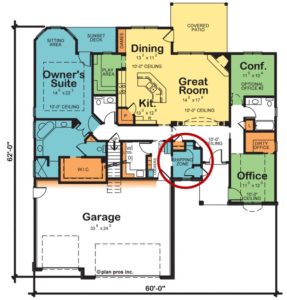 Shipping and Receiving. Hooray! Twelve online sales over the weekend – closing out your record-setting week. But you have to put your life somewhat on “hold” waiting for your shipper to pick up those items. Working around that driver’s timetable can be a thing of the past with a secure shipping vestibule, often located within your home office. Imagine opening a door and placing your shipments and shipping documents in a “closet.” Now you have the freedom to leave if you want. When the shipper arrives at your house, he/she unlocks the exterior door of that closet, retrieves those items/drops off the supplies you had ordered, and locks that exterior door. You come back home, unlock the interior door, and fetch the supplies. No longer are you bound by your shipping and receiving schedule.
Shipping and Receiving. Hooray! Twelve online sales over the weekend – closing out your record-setting week. But you have to put your life somewhat on “hold” waiting for your shipper to pick up those items. Working around that driver’s timetable can be a thing of the past with a secure shipping vestibule, often located within your home office. Imagine opening a door and placing your shipments and shipping documents in a “closet.” Now you have the freedom to leave if you want. When the shipper arrives at your house, he/she unlocks the exterior door of that closet, retrieves those items/drops off the supplies you had ordered, and locks that exterior door. You come back home, unlock the interior door, and fetch the supplies. No longer are you bound by your shipping and receiving schedule.
The Leinart’s (plan #29336) shipping vestibule at the front entrance provides a secure location for shipping and receiving packages. In addition, the home-based business configuration presents a separate entrance for clients, dedicated bathroom, and a conference or waiting room.
Coming next week: Storing solutions for all areas of your home!
Download our Home Office Planner to aid in the design of your home office space.
For more resources on thoughtful design and products:
- Visit our blog
- Browse our Her Home™ Magazine
- Thoughtful Design Concepts
